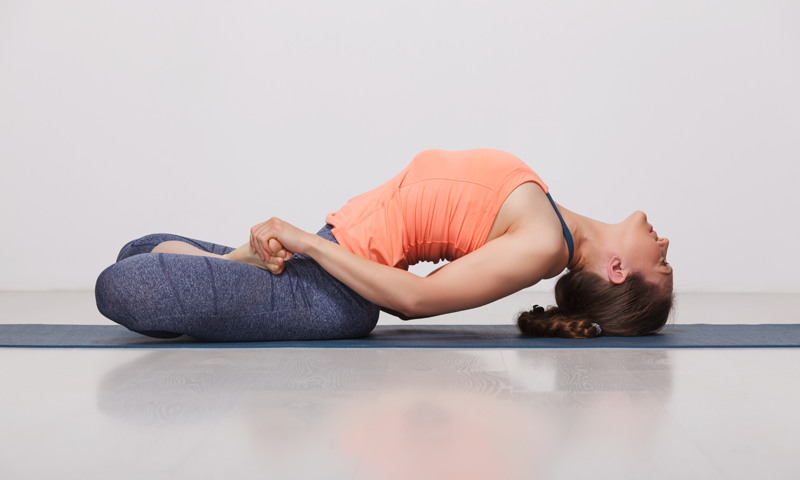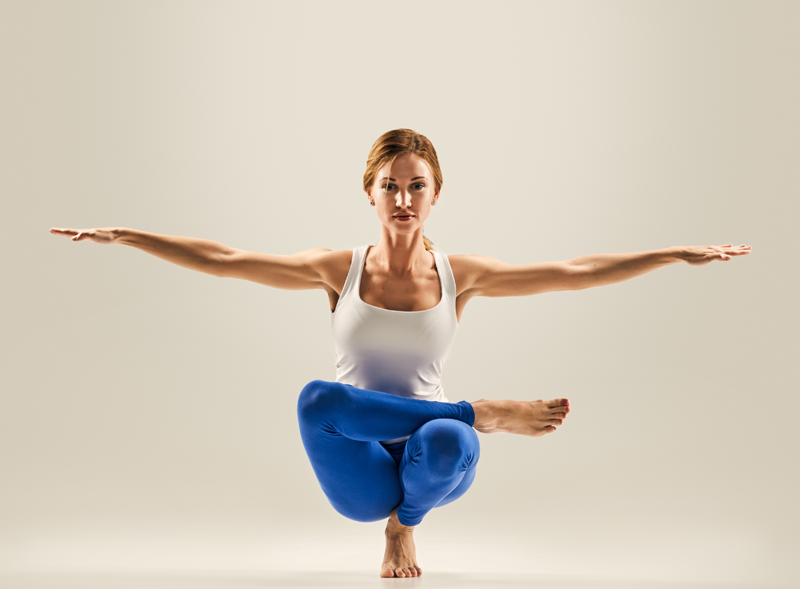
What Are Asanas in Yoga?
17th November 2017
How to Improve Flexibility with Yoga
24th November 2017What Are Pranayamas in Yoga?

Pranayamas are the breathing exercises practised within yoga. Designed to clear the body of physical and emotional obstacles, pranayamas free the breath and the flow of life energy often referred to as ‘prana’. Over time, the stresses of modern life can create physical and energetic obstacles in the body. When these occur, our breathing subconsciously becomes shallower, ultimately restricting the flow of prana. It is also thought that wearing looser clothes can help to relax the body and prevent it from feeling tight and tense, in which case you may want to pick up suitable leggings or a loose top, such as our Val Strappy Tank Top.
Through pranayamas, individuals work on freeing and regulating their breathing as well as letting prana flow smoothly throughout the body. Doing so is thought to relax the body and promote healing, in addition to rebalancing breath and life energy. In this article, we explore pranayamas in more detail, discussing a few of the most popular techniques and the benefits each one holds.
Effects and Benefits
Physically, pranayamas can be used to strengthen the respiratory organs. Learning the correct techniques will allow individuals to explore the lower, middle, and upper parts of breath. This knowledge will then enable them to regulate the inhalation, retention, and exhalation of the breath. Practicing pranayamas regularly will stimulate the parasympathetic system; this stimulation counteracts the overstimulation brought on by the Fight or Flight response.
Our breathing patterns vary depending on our emotional state; for instance, if we are angry we will breathe in a different way to when we are excited. Due to the close link between our breathing and emotions, we can energise or calm ourselves by changing our breathing techniques. With this in mind, practising pranayamas regularly can help us to consciously alter our emotional state through breathing.
Popular Pranayamas and Their Benefits
Ujjayi Breathing
Ujjayi Breathing is usually practised in Ashtanga Vinyasa classes to create heat and stability within the body. This pranayama can also be referred to as Victorious Breath or Ocean Breath. Often, Ujjayi breathing can help individuals to take their time with each posture, reminding them that proper breathing is more important than an idealised shape of the pose. It can be beneficial to practice this breathing technique after a sequence of strenuous poses to help lower the heart rate; with this in mind, Ujjayi breathing is particularly helpful in Vinyasa flow classes. Like any mindful breathing, Ujjayi can be used to increase the awareness of our breath. Additionally, practising Ujjayi breathing can teach us to use our full lung capacity. Doing this, rather than shallow breathing, will allow a better flow of oxygen to the brain.
Nadi Shodhana
Nadi Shodhana, or alternate nostril breathing as it’s sometimes referred to, is one of the best pranayamas to calm the body and mind. This breathing technique helps to balance the Ida and Pingala, two of the most important energy channels in the body. Nadi Shodhana can be described simply as a technique that balances breath through both nostrils. Typically, one nostril is a little more blocked than the other. As the blocked nostril is taking in less oxygen than the other side, our breathing pattern can be thrown off balance. Practicing Nadi Shodhana will ensure that both sides of the brain get an equal amount of oxygen throughout the day. In addition to the obvious benefits this pranayama brings, it is also great for relaxing the mind and balancing our entire system. The breathing technique can also improve concentration, allowing us to focus properly on daily activities.

Kapalabhati
Kapalabhati is often referred to as ‘Skull Shining Breath’. The purpose of this pranayama is to cleanse the breathing pathways through strong, fast exhalation. Using the abdominal muscles, breath should be exhaled as quickly as possible, followed shortly after by a natural inhale. This technique is thought to improve circulation to the brain which in turn will energise the mind – hence the ‘Skull Shining’ nickname. Additionally, Kapalabhati stimulates the digestive system by massaging the abdominal muscles and digestive organs.
Agni Sara
Agni Sara, or Fire Breath, is similar to Kapalabhati. With the same focus on exhaling with force, it boasts a variety of similar benefits for the abdominal muscles and digestive organs. However, unlike Kapalabhati, Agni Sara is often practised using one nostril at a time. The pranayama is slower in nature, making it easier for beginners to pick up.
In some yoga classes, Agni Sara is taught almost the same way as Kapalabhati. Typically, though, the pranayama is taught by exhaling the breath fully and then applying a throat lock, referred to in Sanskrit as Jalandhara Bandha. Once the throat lock has been applied, students are taught to contract and expand the abdomen whilst exhaling. This technique is thought to increase energy levels and cleanse the digestive organs. To make the process all the more comfortable, try the Mansfield Easy Bra; an Ana Heart favourite.
Nauli
Again, Nauli is similar to Kapalabhati. This powerful pranayama focuses on massaging the abdominal muscles and organs. To practice Nauli, begin in a standing position with your hands on your thighs. Next, exhale as much breath as possible through the mouth. Once you’ve emptied the lungs, begin to contract the abdominal muscles; focus on contracting the rectus abdominis muscles first to form an arch down the middle of the lower stomach. Next move onto contracting the left rectus abdominis muscles and then the right, ultimately creating a churning motion within your torso.
While Nauli is similar to Kapalabhati and Angi Sara in ways, the practice is a little trickier to master. With this in mind, this pranayama is best practised by more advanced individuals – typically, those who can perform the two previous pranayamas with ease. When Nauli is practised correctly, it can be a strong pranayama with an array of positive benefits to the entire abdominal area. Particularly, the technique helps to massage and tone the muscles and nerves, improving digestion and the reproductive system.
In Summary
Whether you’re a complete beginner or an experienced yogi, incorporating pranayamas into your daily yoga practice can have a vast range of positive benefits to both the body and mind. If you’re having difficulty mastering any of the techniques, consider attending a local class; there, an experienced yoga instructor will be able to help you with the pranayamas to ensure you’re practising them correctly. Before the day of your class, make sure you have suitable yoga clothes to practice in. A lightweight yoga top will allow the body to oxygenate sufficiently. For a breathable option, we recommend the Ana Heart, Val Strappy Tank Top.

